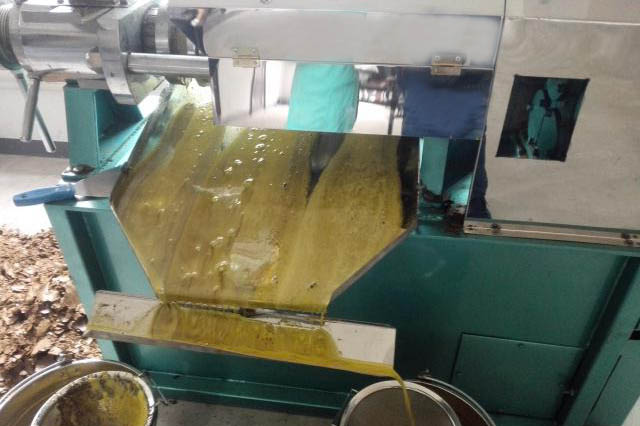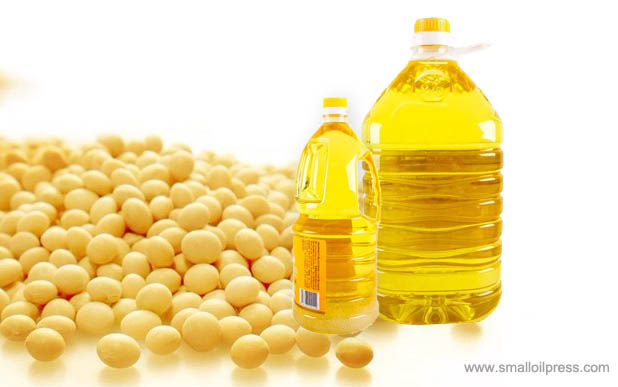How to operate small screw oil press
Small screw oil presses are a type of automatic oil extraction machine that are widely used for processing a variety of oil plants, including rapeseed, cottonseed, sesame, peanuts, soybeans, sunflowers, jatropha, linseed and others. They are the perfect choice for small and medium-sized oil extrusion workshops or individual households due to their reliable performance, easy operation and repair.

Next, we will discuss how to operate the small screw oil press correctly.
Before using the oil press, it is important to prepare all the necessary assistant appliances and containers and examine and adjust the tightness of the transmission belt. Once this has been done, start the engine and let the machine run idle for 15 minutes. During this time, check the rotation speed of the pressing screws, which should be around 33 dmin. It is also important to pay attention to the meshing situation of gears in the gear box and the sound of the machine during idle running, as well as to ensure that the bearing part and engine are functioning normally. The electricity current during idle running should be around 3A, and if it is too high, the machine should be stopped and checked immediately before starting again.
After the normal idle running period, prepare around 50Kg of rape seed or soybean and feed it into the feeding hopper. It is important to note that the feeding speed should not be too high at the beginning of the oil pressing process, as this can cause an instant increase in pressure in the pressing chamber which can block the rotating screw and even break the pressing cage with serious consequences. Therefore, the feeding process should be slow and steady to allow the oil press to run in at the beginning of pressing. After several times, which usually takes around 3-4 hours, the oil expeller’s temperature will start to increase with light smoke, which is normal. The temperature of the pressing chamber is low at first, but the screws can be adjusted slowly and the handle on the regulating bolt can be adjusted to increase the thickness of the cakes. At the same time, the moisture content of the material should be improved. When the pressing cage is at around 90 degrees and the oil expeller is in normal operation, the thickness of cakes should be adjusted to between 1.5-2.5mm, and the clamp screw should be tightened.
Once the oil press is in normal operation, the oil output of high oil plants will be concentrated at the pressing bar and the front pressing rings. Oil output of the pressing bar accounts for around 60% of the total oil output, while the front pressing ring accounts for around 30% of it. There is little oil output at the bottom, and the oil will be in drops rather than lines, with a clear color. After repeating this process 2-3 times, the oil content of the rape seed or soybean will be empty. At this point, any residue with a higher oil content can be mixed with new materials and fed into the hopper. It is important to maintain an even feeding speed and not to suddenly increase or decrease the amount of material being fed into the hopper, as this can affect the service time and oil output of the oil expeller.

During normal operation of the oil expeller, it is important to check the situation of discharging cakes. The moisture content of the material should not be too high or too low. Normal cakes are in a sheet shape, with one side that adheres to the screw being smooth and the other side having many hair lines. If the cakes are loose without strength, or if they are not in shape with a deep color that can be crushed into powder by hand touching, this shows that the material has less moisture content. If the cakes are soft, like big sheets, or if they are discharging with much foam, it means the moisture content is too high. Under normal conditions, there should be no or very little residue from the pressing rings, but at the pressing bars, the residues will be like slim sheets, indicating a higher moisture content. If the residue is powdery, it means there is less moisture content. The changing position of oil output can also indicate whether the moisture content is proper; when the moisture content is too high or low, the position of oil output is usually at the back part.
The small oil press machine is the latest domestic oil press equipment developed by the company through long-term production. It boasts a multi-stage pressing and oil filtering system that includes a vacuum oil filter, making it a highly efficient and reliable tool for extracting various raw materials. In addition to its impressive performance, the small oil press machine is also easy to operate and maintain. Its compact design and user-friendly interface make it accessible to even those with little experience in the field.

